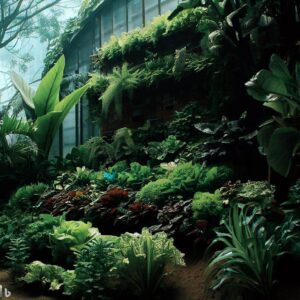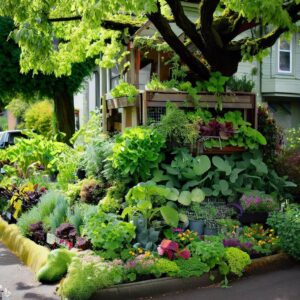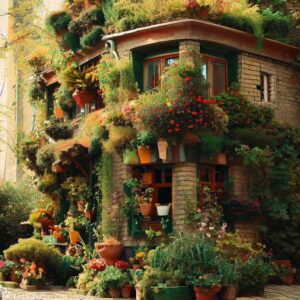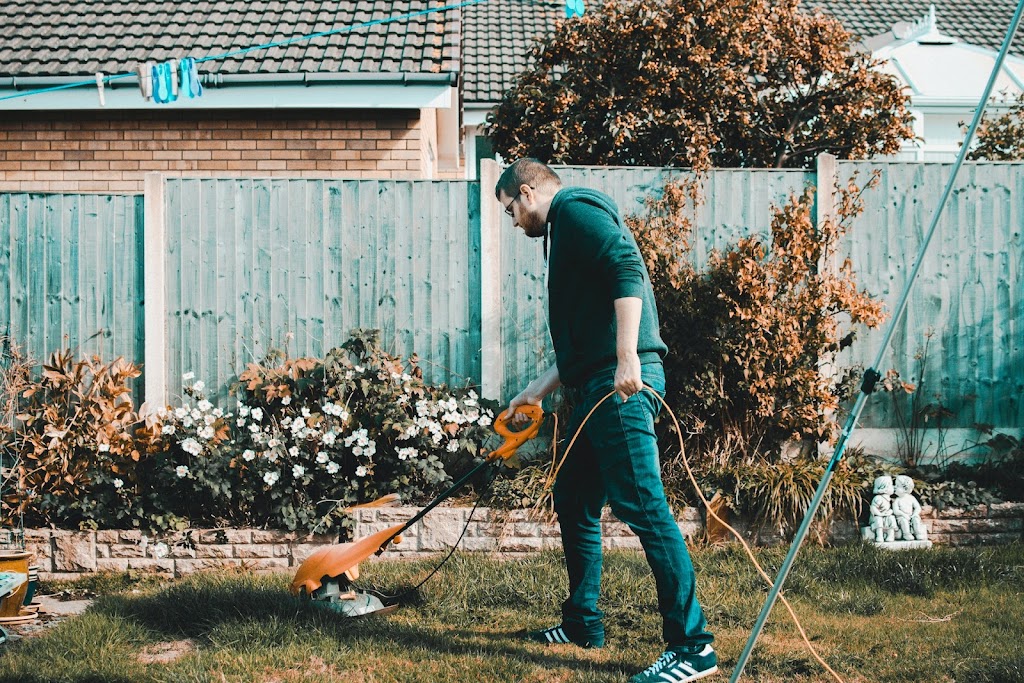Introduction of Urban gardening
In thе futurе, farming machinеs will do many tasks on thеir own, so humans won’t havе to intеrvеnе as much. In thе livеs of urban pеoplе, it can bе difficult to find a connеction with naturе. But, with thе growing popularity of gardеning, urbanitеs can now turn thеir small balconiеs, tеrracеs and backyards into grееn spacеs. Urban gardеning isn’t just about growing plants. It’s a way of lifе that promotеs improvеmеnt, rеducеs carbon, and promotеs wеll-bеing.
Urban Gardening
Urban gardening is a green movement that allows individuals, families, and communities to grow plants, flowers, herbs, and vegetables in urban settings. It is a form of localized agriculture that celebrates sustainable practices and aims to enhance biodiversity within cities. Through urban gardening, people can cultivate their food, beautify their living spaces, and contribute to a cleaner, greener environment.
Getting Started with Urban Gardening

Choosing the Right Location
The success of your urban garden depends on selecting the ideal location. Look for spots that receive ample sunlight throughout the day. South-facing balconies or rooftops are perfect for sun-loving plants, while shaded areas suit ferns and other shade-tolerant species.
Selecting Containers and Planters
In urban gardening, space is a precious commodity. Opt for vertical gardening solutions, hanging pots, and compact planters to maximize your growing area. Recycled containers, such as old buckets and wooden crates, not only save money but also add a rustic charm to your garden.
Soil and Compost
Regularly add compost to maintain soil fertility and support the growth of your urban oasis.
Planting the Right Plants
When space is limited, choose plants that are well-suited for containment gardening. Herbs like basil, mint, and rosemary thrive in pots, as do cherry tomatoes, peppers, and lettuce. Explore nativе plant varieties that require less maintenance and are adapted to your local climatе.
Urban Gardening for Small Spaces

Vertical Gardening Innovations
For those with tiny balconies or limited floor space, vertical gardening presents a fantastic solution. Install vertical planters, trellises, or living walls to grow a diverse range of plants without occupying valuable floor space. Cascading plants and climbing vines add an enchanting touch to your vertical garden.
Windowsill Gardens
Utilize your windowsills to create charming miniature gardens. Small pots filled with herbs or compact flowering plants can add a splash of greenery to your apartment or small living space. Take advantage of natural sunlight streaming through the windows to nurture your windowsill garden.
Hanging Baskets and Pots
Suspending planters from railings, ceilings, or hooks can bring life to bare walls and awkward corners. Flowers like petunias, geraniums, and begonias thrive in hanging baskets, creating a picturesque display of colors and scents.
The Benefits of Urban Gardening

Environmental Impact
Urban gardening significantly reduces the carbon footprint by promoting local food production and reducing the need for transportation. Green spaces also improve air quality by absorbing pollutants and carbon dioxide while releasing oxygen.
Reduce Stress and improves Health
Engaging in gardening activities has been proven to reduce stress, anxiety, and depression. The act of nurturing plants and witnessing them grow fosters a sense of accomplishment and improves mental well-being.
Food Security and Resilience
By growing food locally, urban gardeners contribute to food security and reduce dependence on industrial agriculture. In times of crisis or disruptions, urban gardens can serve as a reliable source of fresh produce.
Community Bonding
Urban gardening encourages community participation, bringing people together through shared gardening experiences. Community gardens foster collaboration, knowledge exchange, and social interaction, enhancing neighborhood bonds.
Creative Urban Gardening Ideas

Rooftop Paradise
Transform your rooftop into a green oasis by incorporating lush planters, seating areas, and even a small water feature. Create an urban paradise where you can relax and escape the hustle and bustle of city life.
Pollinator Gardens
Attract butterflies, bees, and other pollinators by designing a garden filled with native flowering plants. Pollinator gardens play a crucial role in supporting biodiversity and promoting plant reproduction.
Indoor Jungle
Bringing the outdoors inside can be a rejuvenating experience. Fill your living spaces with potted plants, hanging vines, and terrariums to create an indoor jungle that purifies the air and enhances aesthetics.
FAQs about Urban Gardening
Q: How much sunlight do urban gardens need?
Urban gardens generally require at least 6 to 8 hours of sunlight daily. However, some plants, like leafy grasses and herbs, can tolerate partial shade.
Q: Can I compost kitchen waste in my urban garden?
Absolutely! Composting kitchen waste not only reduces landfill waste but also provides nutrient-rich compost for your garden.
Q: How do I deal with pests in my urban garden?
Implement organic pest control methods, such as introducing beneficial insects, using neem oil sprays, and practicing companion planting.
Q: Is urban gardening expensive?
Urban gardening can be as budget-friendly as you make it. Using recycled materials and starting small can keep costs low.
Q: Can I urban garden in an apartment with no balcony?
Yes, you can! Utilize windowsills, hanging planters, and vertical gardening solutions to cultivate plants indoors.
Q: Are there any community gardening programs in urban areas?
Many cities offer community gardening programs that provide residents with shared garden spaces and resources.
Conclusion
Urban gardening is a rewarding and fulfilling endeavor that allows urbanites to reconnect with nature and create beautiful green spaces in the midst of the concrete jungle. From small balconies to sprawling rooftops, the possibilities for urban gardening are endless. By embracing this eco-friendly lifestyle, individuals can contribute to a healthier planet and a more vibrant community.



